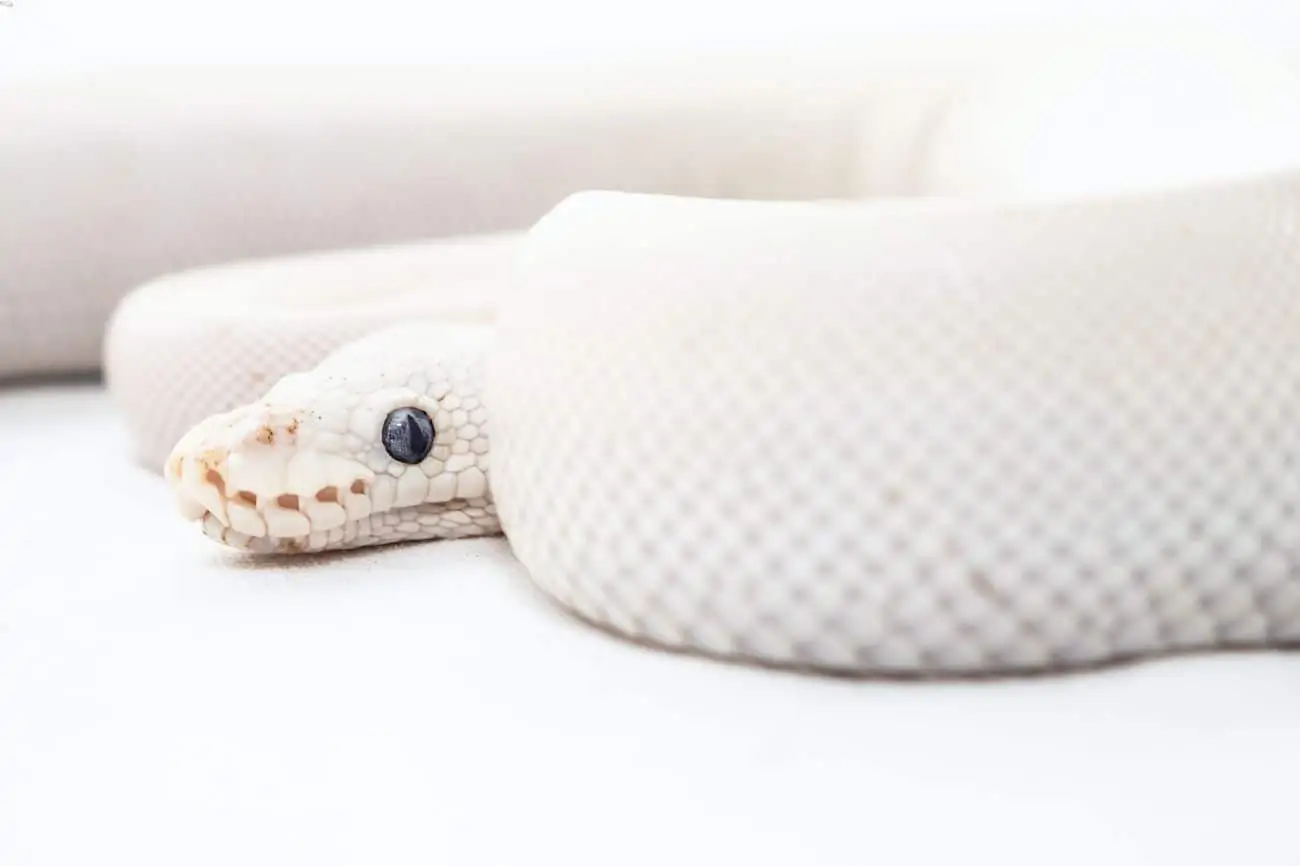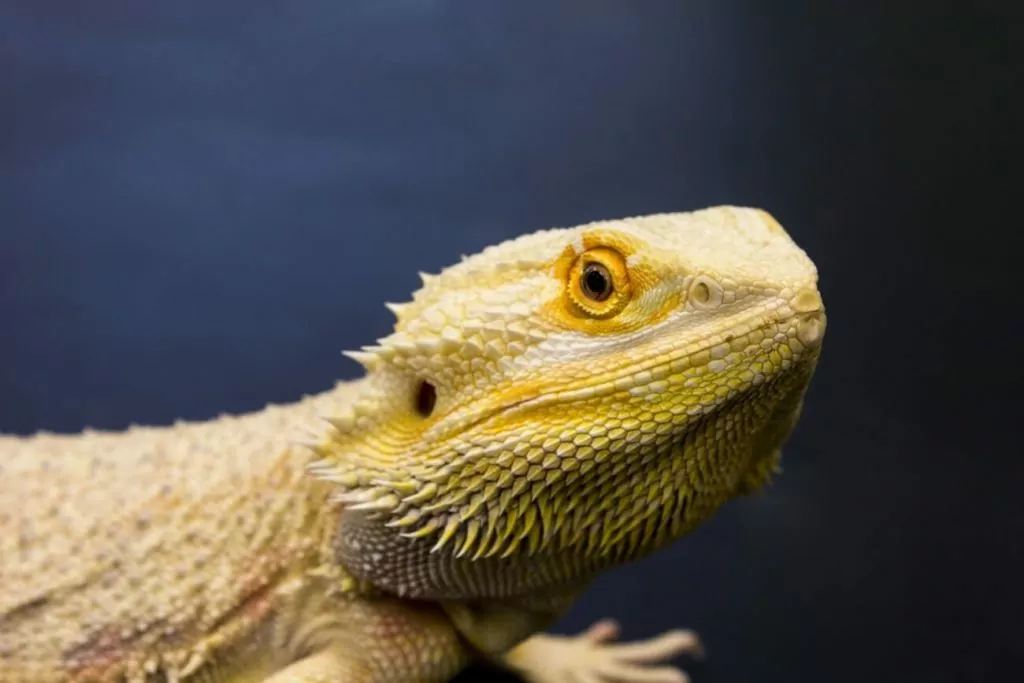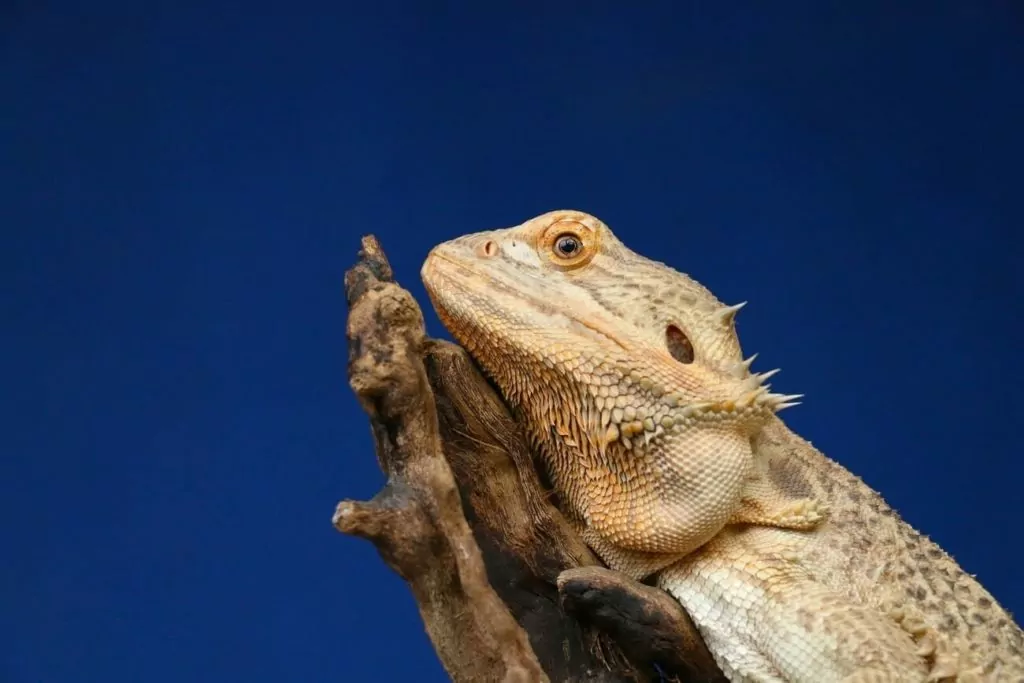Figuring out why a ball python won’t eat can be extremely stressful (especially for newer owners). Unlike a lot of other pets, these reptiles don’t give you many clues!
That means you need to have an understanding of their behavior and care requirements if you want to figure it out.
To make things easy, we put together this helpful guide to walk you through the process.
Table of Contents
Common Reasons
When a ball python won’t eat, there are a number of reasons to consider. While it might seem a bit confusing and open-ended at first, it’s actually rather straightforward.
Through a simple process of elimination you can usually arrive at the answer. All it takes is a little bit of detective work!
1. Anxiety & Stress
Stress is probably the most common reason why a ball python won’t eat, since many situations can stress out your snake. Your pet may be feeling especially stressed if you just brought them home, changed their terrarium, or took them on a trip. If you have just brought your ball python home or changed their enclosure, leave them alone for two weeks to give them a chance to settle in.
Overhandling your snake can also stress them out (and can even lead to a bite). Ball pythons are nocturnal creatures who like to keep to themselves. They prefer being left alone; many of them do not enjoy being handled often. If your ball python stops eating, handle them as little as possible until they begin eating again.
Loud noises are also stressful, and can cause a ball python to stop eating. That’s because a ball python hears differently than most other animals.
These reptiles are fine-tuned to the vibrations in their environments. The vibrations a snake picks up on helps them detect prey and predators. If you play loud music regularly, it can stress out your snake and make them feel unsafe in their environment. Try to limit the amount of noise in your home, especially in the room where your snake lives.
Your ball python needs to feel safe in their environment in order to eat. You can help your ball python feel safe by offering them at least two hides in their terrarium. Place one hide on the warm side of the enclosure and the other on the cool side. Ideally, you’ll have more than two hides in the terrarium for your ball python.
Expert Tip: These animals like to be in tight places. Make sure the hides you provide are large enough for your snake to curl their entire body into but small enough that the side is touching their body on most sides while they are in it.
2. It’s Too Cold in Their Enclosure
Your ball python’s enclosure must be at the correct temperature for them to eat, which is why it’s one of the most important parts of their care. You can use a basking light, heating pads, and a ceramic heat emitter to warm your ball python’s enclosure.
The enclosure should measure 88-92 degrees Fahrenheit on the warm side and no cooler than 75 degrees on the cool side. Place several thermometers in your ball python’s terrarium to monitor the temperature.
Here’s why this is so important
All cold-blooded animals, including ball pythons, need adequate heat to properly digest their food. A ball python won’t eat if their enclosure is too cold because they know they cannot digest their meal properly. If a snake cannot digest their meal, the food they eat can rot inside their body, causing potentially serious health issues.
3. Seasonal Changes
Ball pythons have an internal clock that tells them when cold weather is approaching. Snakes in the wild will enter a hibernation-like state called brumation when winter hits. During brumation, a ball python stops eating and becomes inactive.
Even though ball python in captivity are kept in warm enclosures, many will still enter brumation. By learning to recognize these signs you’ll be able to identify if this is normal behavior or not.
Expert Tip: You can also consult your local reptile vet if you’re unsure. They should be able to recognize if your ball python is in brumation, or if something else is wrong.
4. You Need To Adjust Your Feeding Strategy
Some ball pythons are rather picky about how, what, and when they eat. When you purchase a ball python, it is a good idea to ask their former caretaker about their eating habits.
Ask how often your snake is used to being fed. If, for instance, your ball python is used to being fed once every three weeks, they won’t be interested in eating every week.
It is also important to find out what type of food your snake is used to eating. If your ball python is used to eating fresh pre-killed or frozen meals, they may actually be afraid of live prey. On the other hand, if your snake is used to killing and eating live prey, they may not even see a frozen meal as food.
Just as important is what prey you are offering your ball pythons. Most ball pythons prefer rats over mice. Don’t be surprised if your snake turns up their nose at the same type of feeder from a different supplier. A ball python who is used to eating a feeder from one supplier may not eat the same feeder from another supplier because it smells different.
You must also be mindful of the way in which you present your ball python their meals. Just like people, these reptiles have different preferences when it comes to the way in which their meals are presented to them. Some may prefer to be left with their pre-killed meal in a paper bag while others may prefer it if you wiggle their prey before you give it to them.
5. They Don’t Feel Comfortable In The Enclosure
In the wild, ball pythons hide in burrows and wait for their prey to come to them. This strategy works very well, but there is a catch:
Rodents, which are a ball python’s main prey, have a very strong sense of smell. That’s why a ball python will find a new burrow after they shed their skin or defecate. Advertising where they are isn’t a very effective hunting strategy!
If your ball python won’t eat, you might want to try thoroughly cleaning their enclosure after every skin shed and defecation. The theory is that your snake will eat more readily if they cannot smell themselves.
Expert Tip: If you’ve made a lot of changes to their enclosure, this can also result in your ball python refusing to eat. They need to feel comfortable and in their element in order to hunt!
6. Insufficient Lighting
Ball pythons prefer to eat in the dark, and many won’t eat if they think it’s too bright out. For some, the darkness of their hut is enough, but others need more darkness in order to feel comfortable eating.
If a bright light is always on in your ball python’s enclosure because it’s the only heat source, try switching to an infrared bulb or putting a heating pad underneath the enclosure instead. This will allow you to provide them with the heat they need (which is very important) while also letting them enjoy the darkness.
Expert Tip: It’s also a good idea to feed your ball python 30 to 60 minutes after turning off the light. Darkness will serve as a great cue that it’s feeding time, and encourage them to eat.
7. It’s Breeding Time
Your ball python may stop eating during breeding season, and that’s completely normal. It’s not unusual for a male snake to stop eating for three to six months if he can smell an ovulating female.
A female snake may stop eating shortly before she lays eggs. If you’re breeding females and this behavior matches the expected egg-laying timeline, that could be the cause!
8. It’s Almost Time For Them To Shed
Most ball pythons won’t eat when they are getting ready to shed. They’re already anticipating quite a task ahead of them, and eating is the last thing on their mind! Their main focus is to find a place to shed safely.
If your ball python’s scales are ashy and dull in color and their eye caps are gray-blue, they are likely getting ready to shed. This will become second-nature to spot as you gain more experience.
Expert Tip: You can mist or soak your ball python in water to make the shedding process more comfortable for them. You should also offer them a meal a day or two after they shed.
9. Sickness
If your ball python isn’t feeling well, they may stop eating. Snake mites, respiratory infections, and mouth rot are common illnesses seen in snakes.
If you see any other symptoms of illness in your ball python, you should take them to your veterinarian for a thorough checkup. In addition to a lack of appetite, symptoms of illness in snakes include eye, nasal, or oral discharge, wheezing or clicking sounds while breathing, diarrhea, and discolored scales.
If your ball python isn’t exhibiting any other signs of illness, you may want to wait and see if any develop before taking them to the veterinarian. Stress can cause ball pythons to refuse food, and a trip to the veterinarian is stressful for snakes.
Of course you should consult your veterinarian if it has been several months since your ball python has eaten and you’ve already tried other solutions to remedy the situation.
How Long Can A Ball Python Go Without Eating?
Fasting is a normal behavior for a ball python in the wild. They can easily go months without eating. In fact, a ball python can go a year without eating if they need to.
This means you don’t need to worry right away if your ball python refuses a few meals. However, if they continue to refuse meals for several months or if they are showing other signs of illness, you should definitely consult with your veterinarian.
Expert Tip: You can always call your veterinarian and ask for their opinion. This is a great way to get some additional feedback on how to proceed before you drag your ball python into the vet.
Wrapping Up
Now that you know all of the common reasons why a ball python won’t eat, it’s just a matter of working backward to figure out the most likely cause. Fortunately, this gets easier with time and experience.
Remember, most of the time it’s nothing to worry about. But it’s always smart to play it safe! If you feel funny about anything you’re seeing, contact your reptile veterinarian and see what they think.



